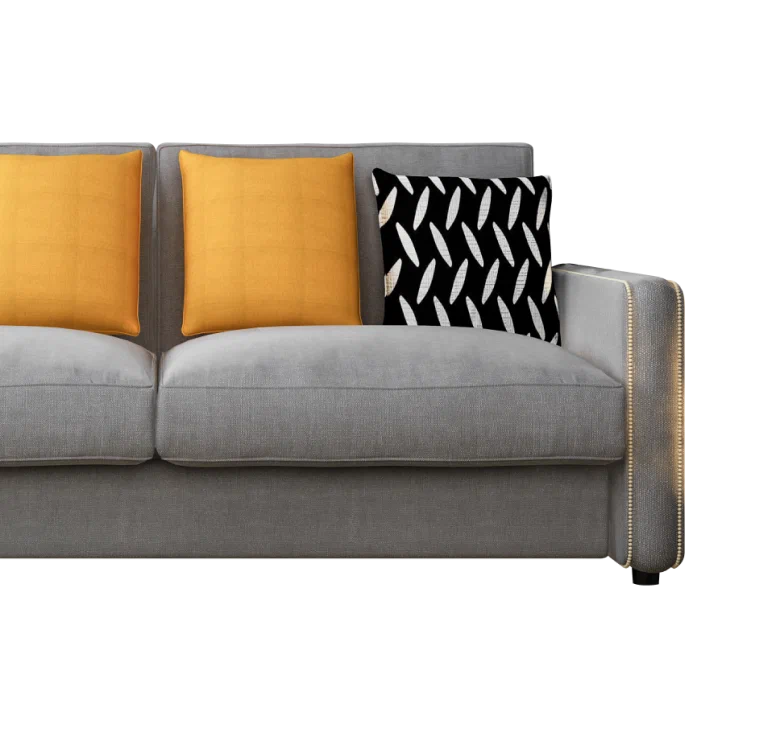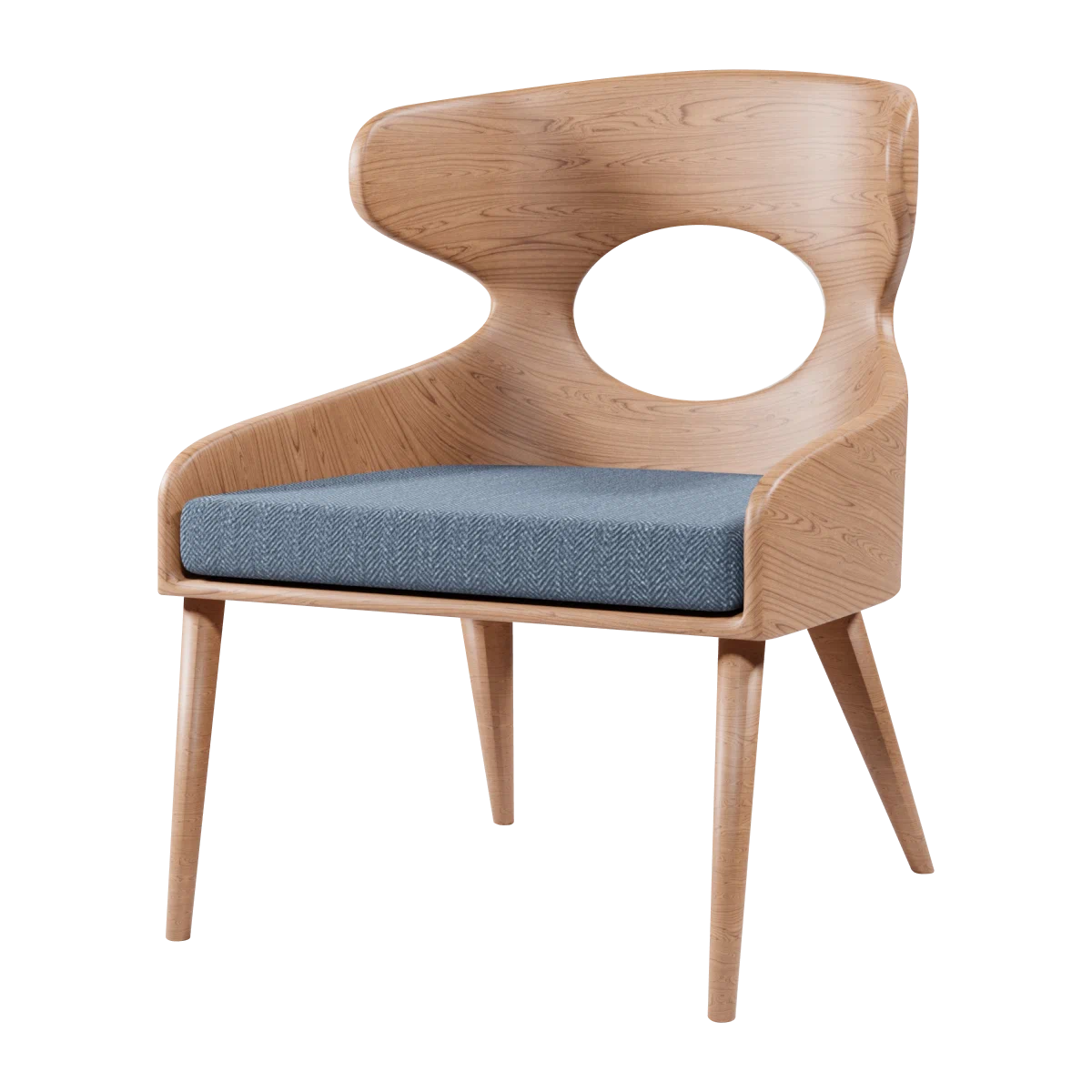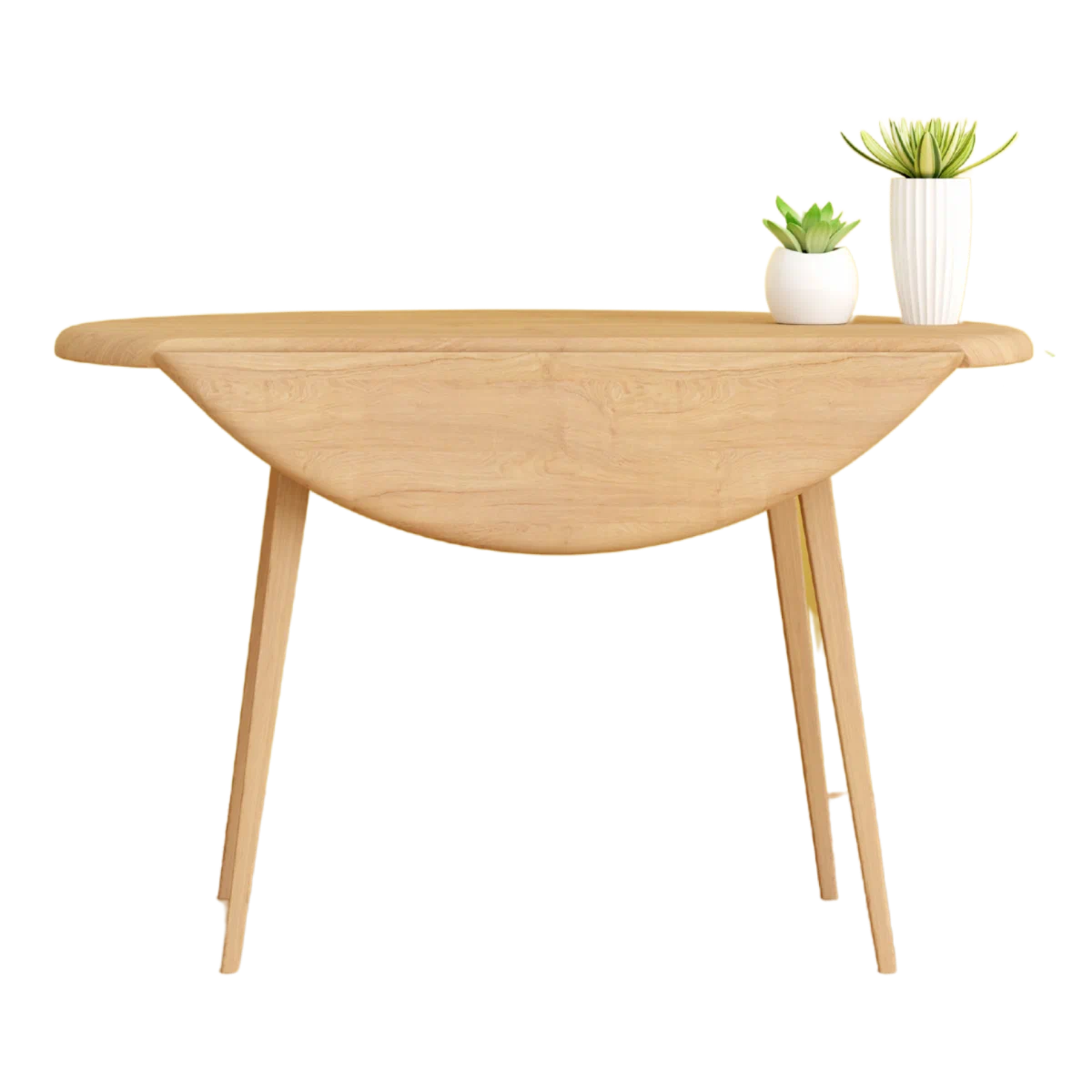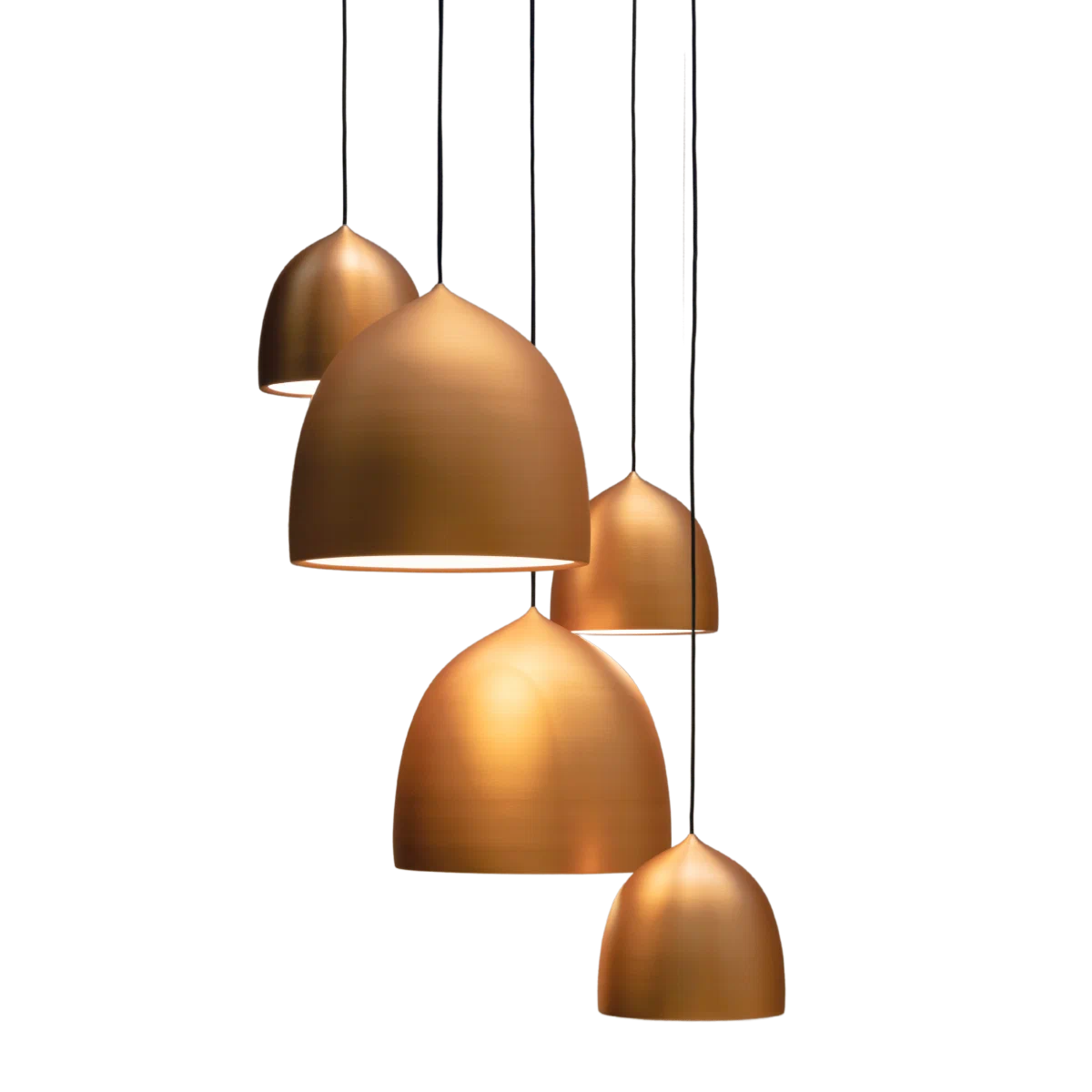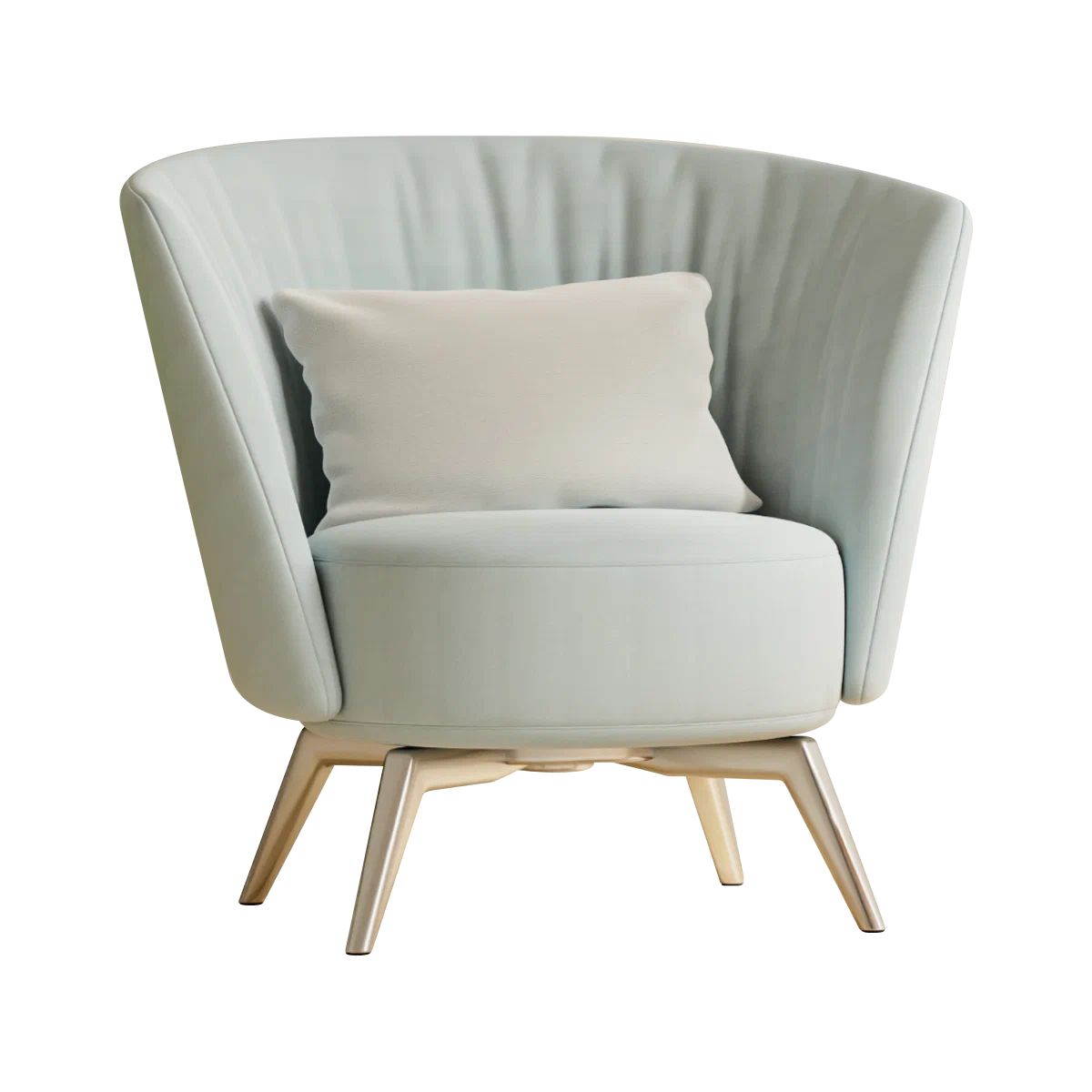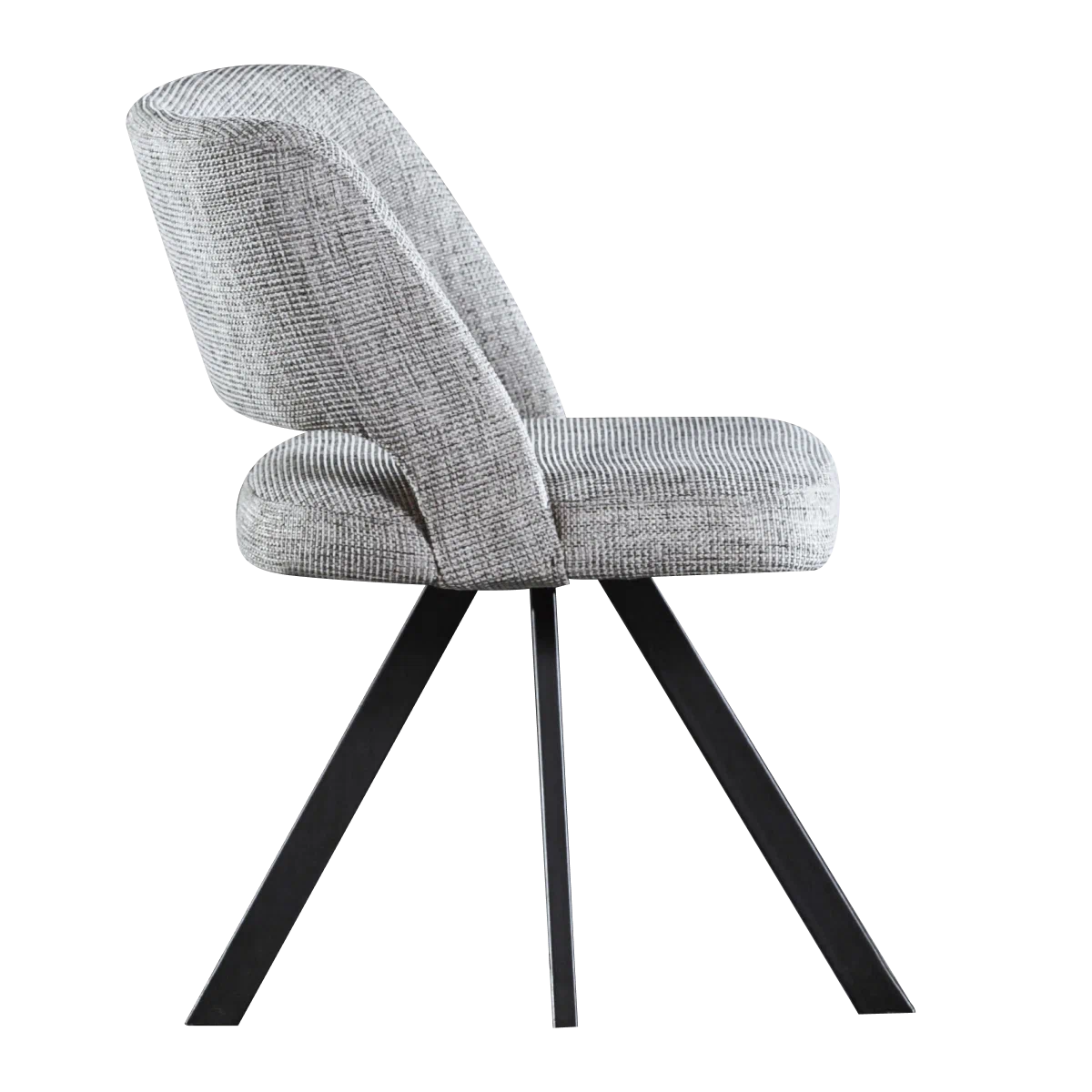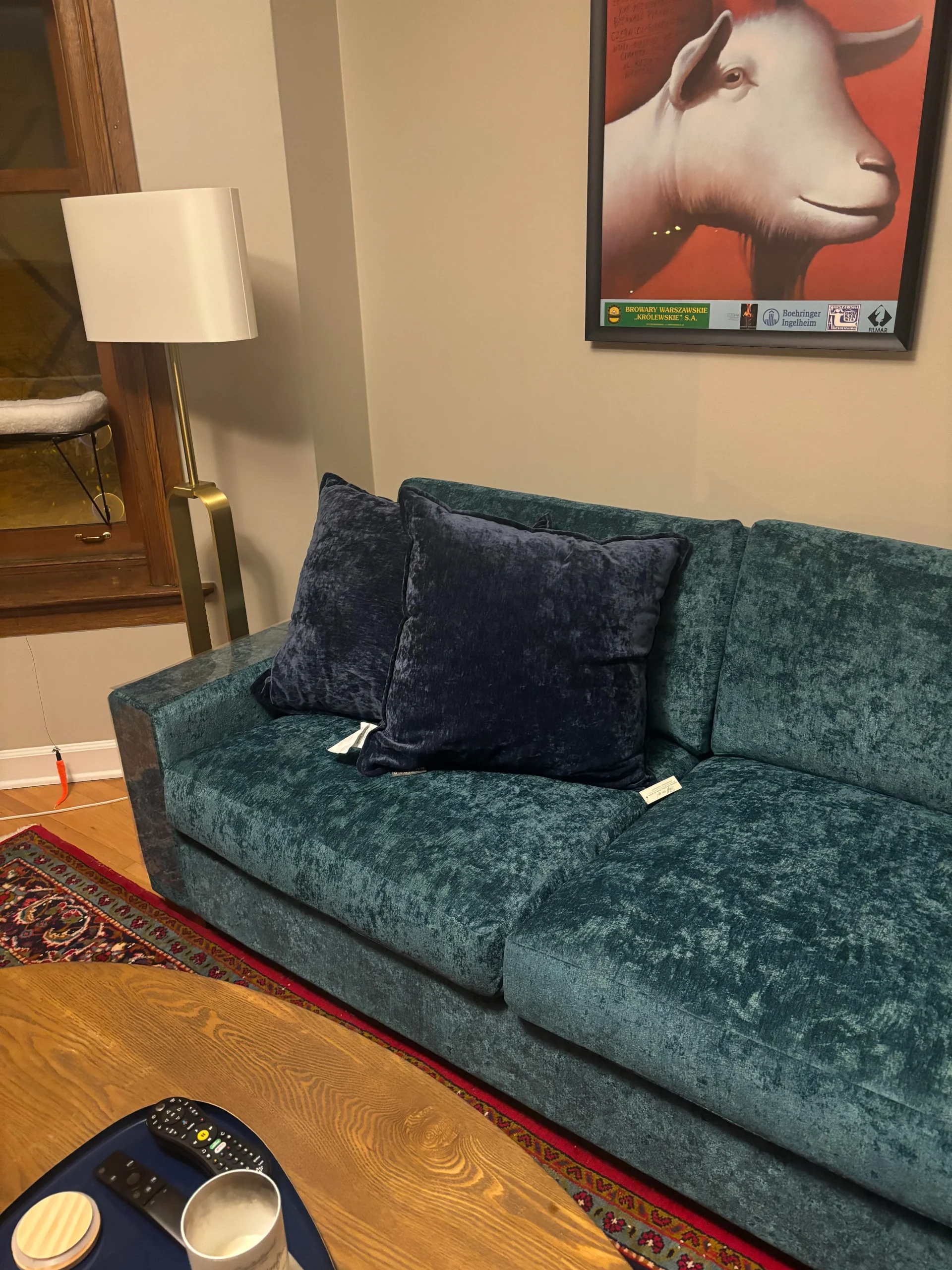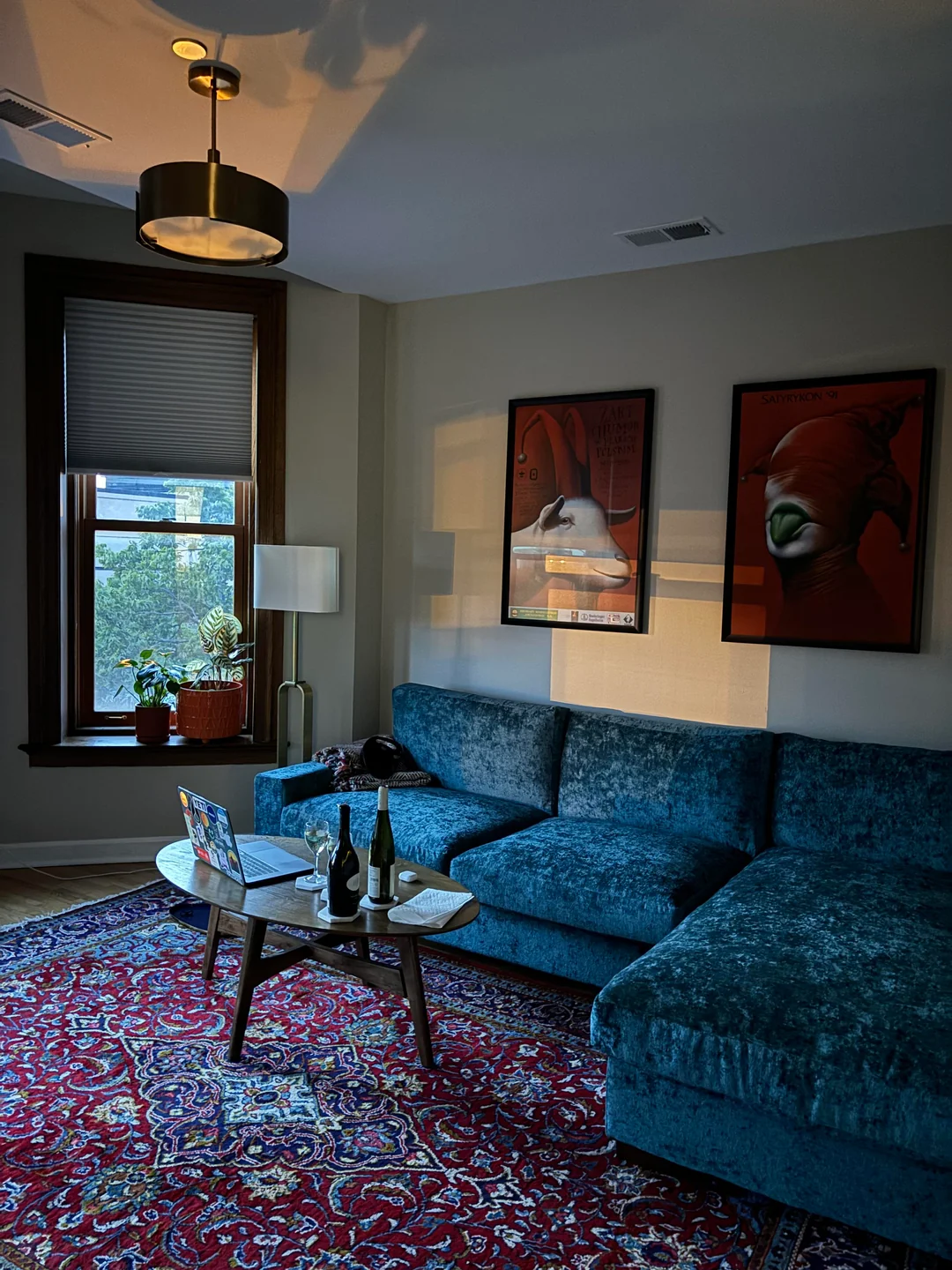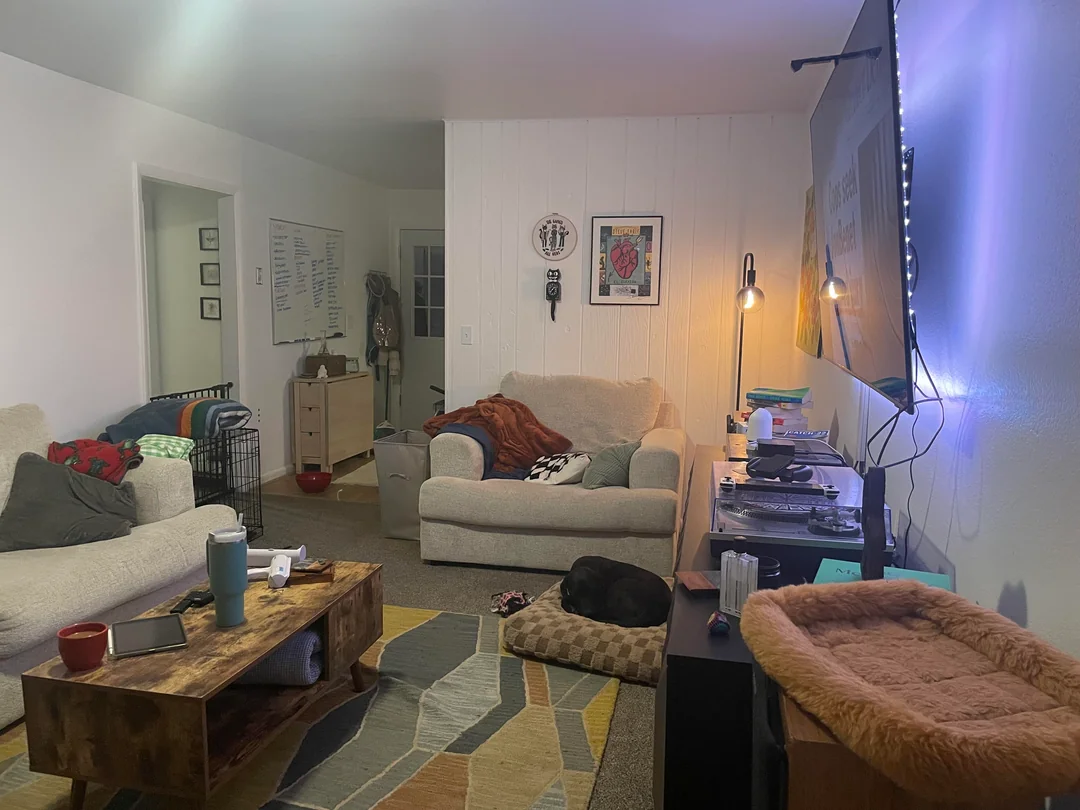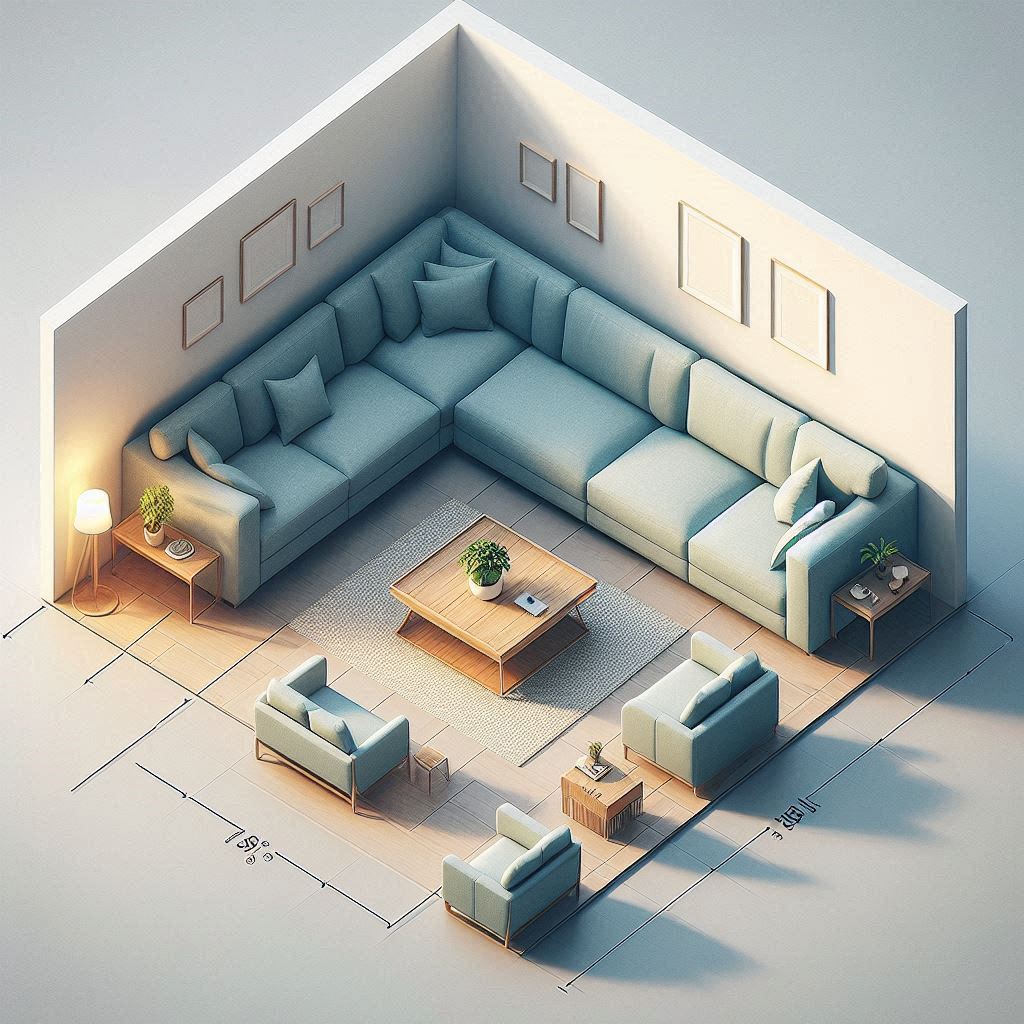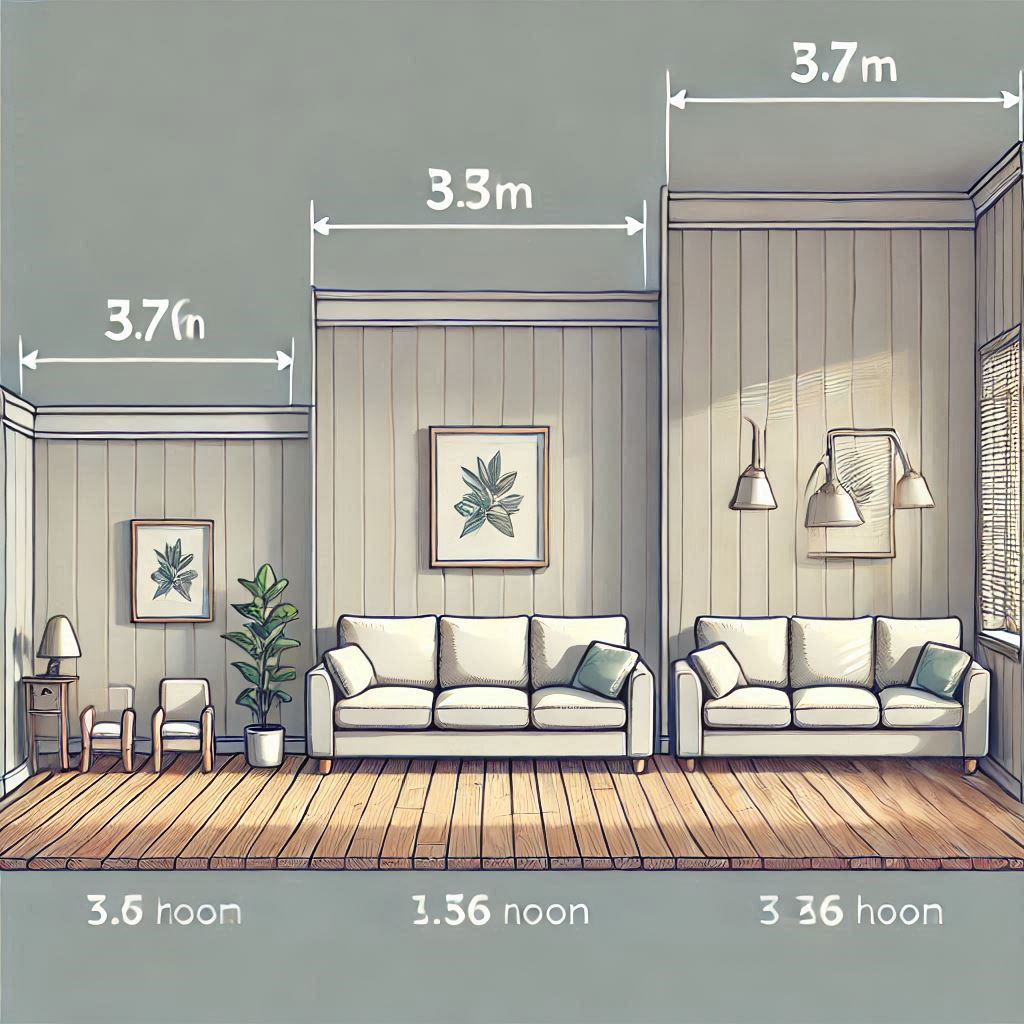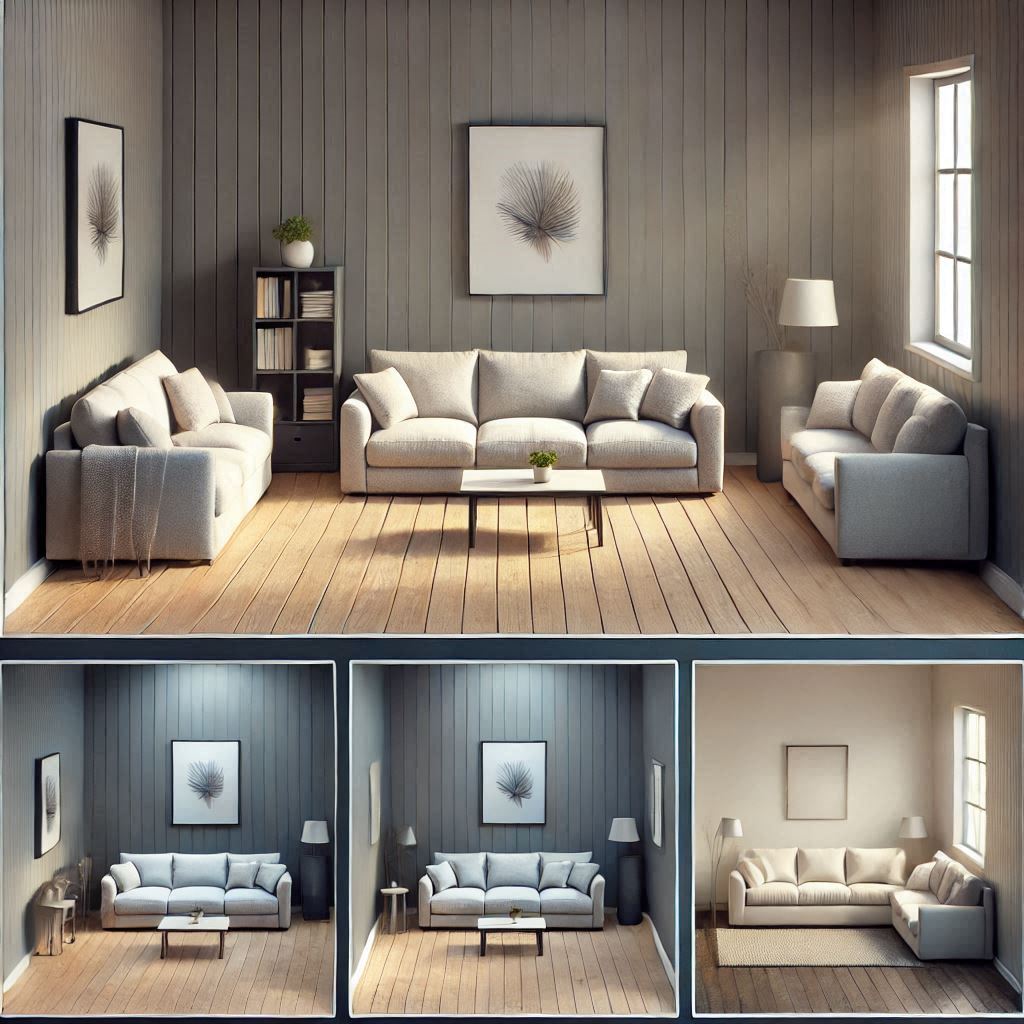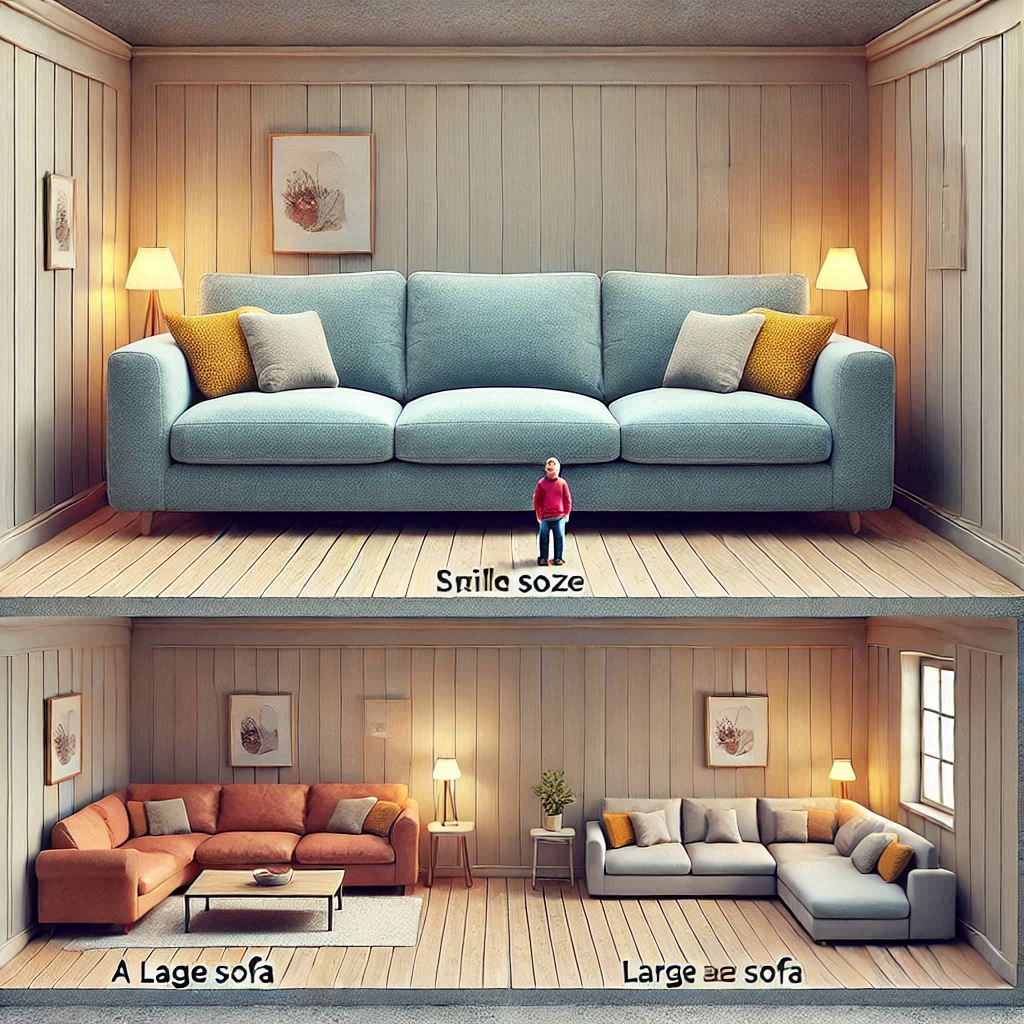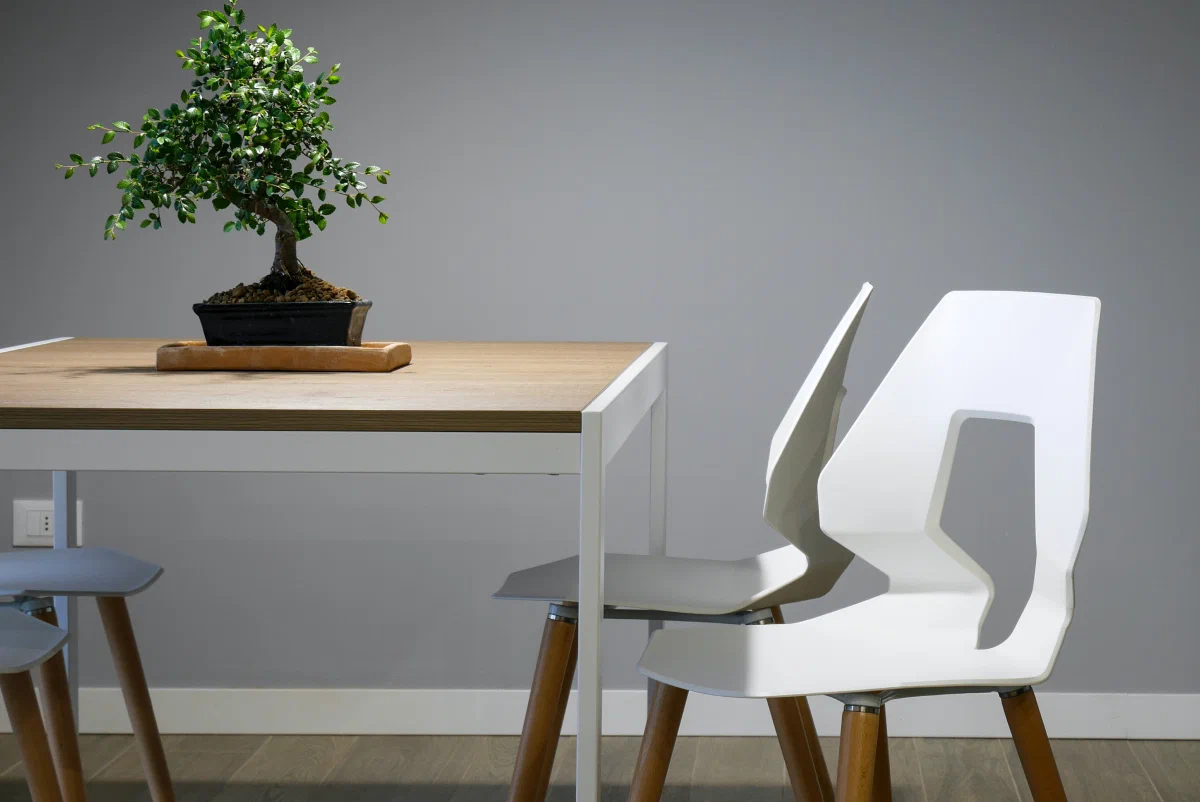
Score a Stylish Sofa: The Ultimate Guide to Couches Under $300
December 2, 2024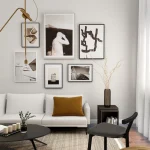
Are Glass Coffee Tables in Style in 2024? A Clear Verdict
December 5, 2024
Score a Stylish Sofa: The Ultimate Guide to Couches Under $300
December 2, 2024
Are Glass Coffee Tables in Style in 2024? A Clear Verdict
December 5, 2024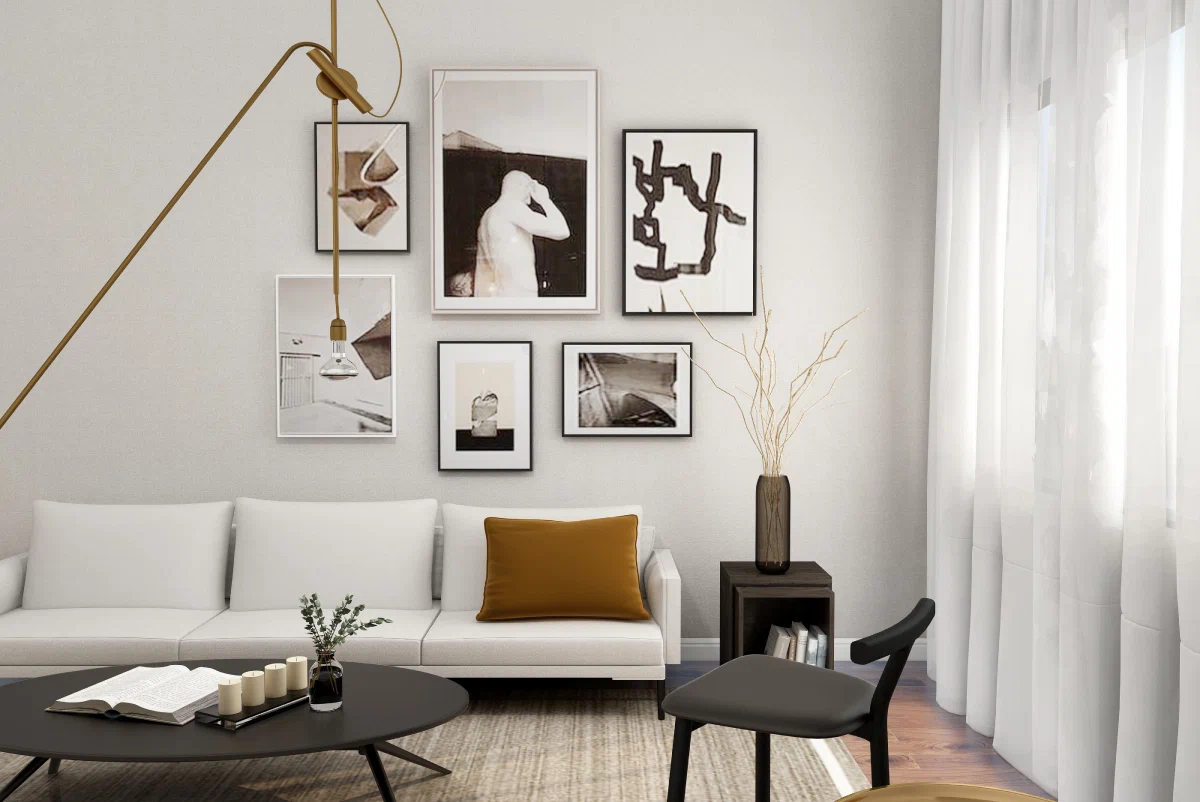
Top Living Room Design Mistakes (and How to Fix Them!)
Ever walked into a living room and felt like something was just... off? Maybe the sofa looked like it was swallowed by the room, or the rug seemed to float aimlessly in the middle of the floor. Perhaps the furniture was huddled together in a corner, making you feel like you were in a furniture showroom instead of a cozy living space.
These seemingly small design missteps can make a big difference in the overall look and feel of your living room. They can make the space feel cramped, awkward, or just plain uninviting. But don't worry, design enthusiast! You don't need to be a professional interior designer to create a living room you love.
In this article, we're going to explore some of the most common living room design mistakes and, more importantly, how to fix them! From choosing the right sofa and rug to mastering the art of furniture placement, we'll equip you with the knowledge and confidence to create a living room that's both stylish and functional. So grab a cup of tea, get comfy, and let's dive into the world of living room design!
Mistake #1: Choosing the Wrong Sofa - Size Does Matter!
Scale and Proportion: It's All About the Fit
Thank and credit to
- r/DesignMyRoom
The number one sofa sin? Choosing one that's the wrong size for your room. A sofa that's too big will overwhelm the space, making it feel cramped and cluttered. On the other hand, a sofa that's too small will look lost and out of place, like a tiny island in a vast ocean of floor space.
So, how do you find the Goldilocks sofa – the one that's just right? It all starts with measuring your space. Grab your measuring tape and figure out the dimensions of your living room. Then, consider the size of the sofa in relation to the other furniture and the overall scale of the room.
Comfort is King (or Queen!)
A sofa might look stunning, but if it's not comfortable, it's a design fail. After all, your sofa is where you'll be spending countless hours relaxing, entertaining, and maybe even taking a nap or two.
Don't be shy about testing out sofas in the store. Sit on them, lie on them, and really get a feel for their comfort level. Pay attention to the seat depth, back support, and cushion firmness. And if you have any specific needs, like lumbar support or a reclining feature, make sure to test those out as well.
Placement Perfection
Where you place your sofa can dramatically impact the flow and feel of your living room. Here are a few tips:
-
Anchor the wall: In a small space, it's perfectly fine to place your sofa against a wall. This helps define the seating area and maximize floor space.
-
Float for intimacy: To create a cozy and intimate seating group, pull your sofa away from the wall and "float" it in the room. This allows for better conversation flow and creates a more inviting atmosphere.
-
Consider traffic flow: Make sure there's enough space around your sofa for people to move comfortably. Avoid blocking walkways or creating awkward traffic patterns.
-
Focal point awareness: If your living room has a focal point, like a fireplace or a window with a view, consider positioning your sofa to take advantage of it.
Mattress Mania: Don't Skimp on Comfort!
Pro Tip: Remember the "same function, different finish" rule when choosing accompanying furniture. If you have a wooden coffee table, consider an accent chair with metal legs or upholstery in a contrasting color.
Don't forget to check out my video on scale and proportion for more in-depth tips: Link To video
By following these guidelines, you can choose a sofa that's the perfect size, style, and comfort level for your living room, creating a space that's both functional and aesthetically pleasing.
Mistake #2: Using a Rug That's Too Small – Don't Get Floored by This Error!
Imagine a beautiful painting hanging on a wall, but it's tiny, almost lost in the vast expanse of the wall. That's kind of what happens when you use a rug that's too small for your living room. It throws off the balance and makes the whole space feel... off.
Size Matters: Why Rug Dimensions Are Crucial
A rug that's too small can make your living room feel smaller than it actually is. It can also make your furniture seem disjointed and floating in space, rather than creating a cohesive and inviting seating area.
Think of your rug as the foundation of your living room design. It anchors the furniture, defines the space, and adds a layer of visual interest and comfort. A properly sized rug creates a sense of harmony and proportion, making your living room feel more balanced and complete.
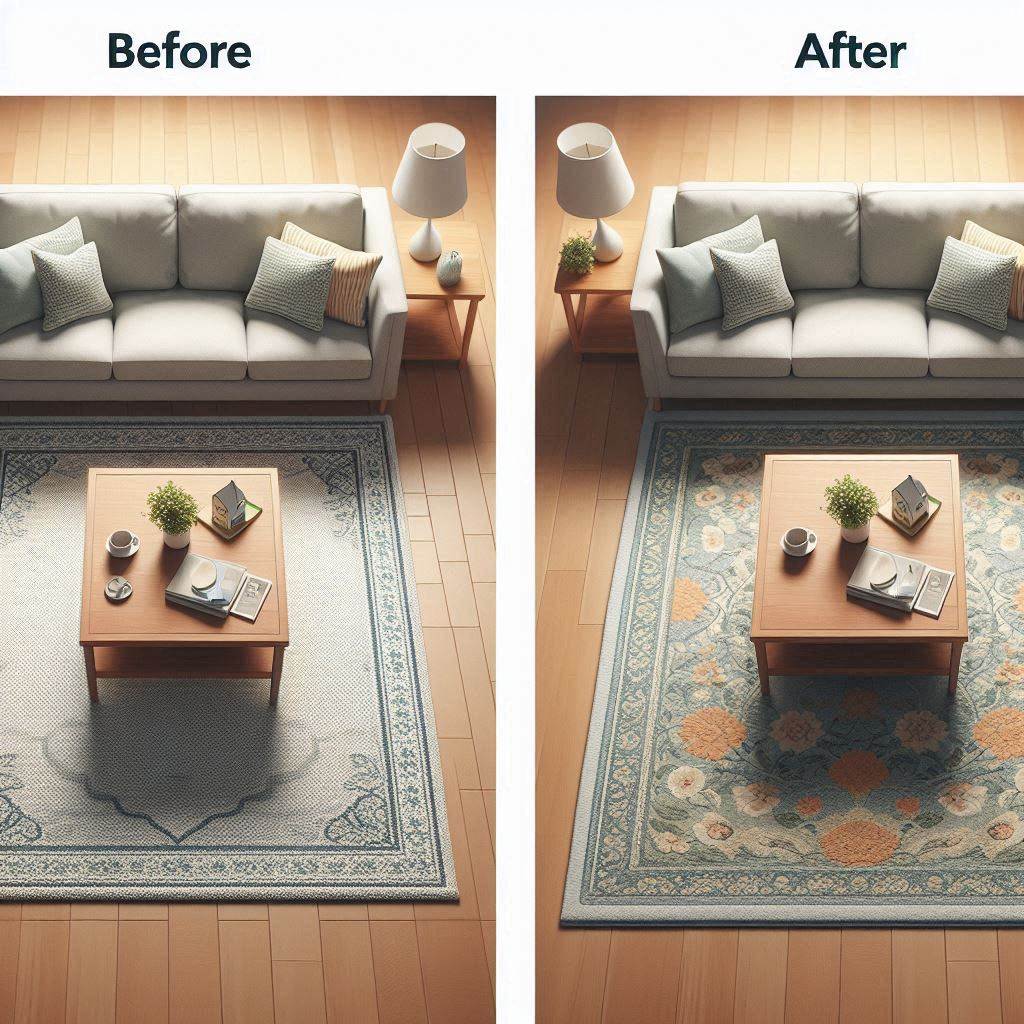
Defining the Space: Creating a Cohesive Seating Area
A well-chosen rug helps to define the seating area in your living room. It creates a visual boundary and brings the furniture together, making it feel like a cohesive unit rather than a random assortment of pieces.
Ideally, your rug should be large enough to extend beyond the front legs of your sofa and any accompanying chairs. This creates a sense of grounding and prevents the furniture from feeling like it's floating in space.
Choosing the Right Rug: A Match Made in Design Heaven
Choosing the right rug involves more than just finding the right size. You also need to consider the style, color, and pattern of the rug in relation to your existing décor.
-
Style: Do you have a modern, traditional, or eclectic living room? Choose a rug that complements your overall style.
-
Color: Consider the colors in your existing furniture, walls, and artwork. A rug can either blend in harmoniously or add a pop of contrasting color.
-
Pattern: If your furniture is mostly solid-colored, a patterned rug can add visual interest. If you have patterned furniture, a more subtle rug might be a better choice.
-
Texture: Don't forget about texture! A rug with a plush pile can add warmth and coziness, while a flatweave rug can create a more contemporary feel.
Pro Tip: A rug is an investment piece, so choose a neutral hue with a durable material that you can enjoy for years to come.
For more in-depth tips on choosing the perfect rug, check out my ultimate area rug guide: [Link to the guide]
By avoiding the mistake of a too-small rug and choosing one that's both stylish and functional, you can create a living room that feels balanced, inviting, and complete.
Mistake #3: Pushing All Furniture Against the Walls – Break Free from the Perimeter!
Picture this: you walk into a living room, and all the furniture is lined up against the walls like shy kids at a school dance. There's a big, empty space in the middle of the room, and the whole setup feels... awkward. Sound familiar?
This is a surprisingly common design mistake, especially in smaller spaces. People often think that pushing furniture against the walls will make the room feel bigger. But in reality, it often has the opposite effect, making the space feel stiff, formal, and uninviting.
Space Planning: The Art of Arranging Furniture
Space planning is like a puzzle, but instead of fitting together tiny pieces of cardboard, you're arranging furniture to create a functional and aesthetically pleasing space. It's about considering traffic flow, creating conversation areas, and maximizing the use of your space.
When you push all your furniture against the walls, you're essentially creating a "no-man's land" in the center of the room. This can make the space feel less inviting and discourage interaction. It's like setting up chairs in a circle but then telling everyone to sit facing the wall – not exactly conducive to conversation, right?
Creating Intimacy: Pull Your Furniture Together
One of the keys to creating a cozy and inviting living room is to create an intimate seating group. This means pulling your furniture away from the walls and arranging it in a way that encourages conversation and interaction.
Imagine two sofas facing each other, with a coffee table in between. Or a sofa and a couple of armchairs arranged around a fireplace. These configurations create a sense of intimacy and encourage people to gather and connect.
Functionality First
Pushing all your furniture against the walls can also limit the functionality of your living room. If your sofa is crammed against a wall, it might be difficult to access side tables or reach for a remote. And if your chairs are lined up against the wall, they might not be conducive to conversation or enjoying the focal point of the room.
Flexibility is Key
Now, I'm not saying that you can never have a piece of furniture against a wall. In smaller spaces, it might be necessary to anchor one large piece, like your sofa, against a wall to maximize floor space. But the key is to avoid pushing all your furniture against the perimeter.
Instead, try "floating" some of your furniture in the room to create a more dynamic and inviting layout. This could mean placing an accent chair at an angle, pulling a coffee table away from the sofa, or creating a separate seating area with a loveseat or a pair of chairs.
Pro Tip: If you're unsure about how to arrange your furniture, try using painter's tape to mark out different configurations on the floor. This can help you visualize the space and experiment with different layouts before committing to a final arrangement.
By breaking free from the "furniture against the walls" mentality, you can create a living room that's both stylish and functional, inviting conversation, and maximizing the use of your space.
Mistake #4: Ignoring the View or Focal Point – Don't Miss the Big Picture!
Imagine this: you've got a stunning view of the city skyline from your living room window, but your sofa is facing the opposite wall, giving everyone a lovely view of... the TV. Or maybe you have a beautiful fireplace, but it's hidden in a corner, overshadowed by a bulky bookcase.
These are classic examples of ignoring the view or focal point in your living room – a design mistake that can make your space feel unbalanced and less inviting.
Identifying the Focal Point: Where Do Your Eyes Go?
Every living room has a natural focal point. It might be a fireplace, a large window with a view, a piece of artwork, or even a stunning architectural feature. The focal point is the element that draws your eye and sets the tone for the room.
Before you start arranging your furniture, take a moment to identify the focal point of your living room. Where do your eyes naturally gravitate when you enter the room? What do you want to highlight?
Orienting the Furniture: Creating a Visual Flow
Once you've identified your focal point, it's time to arrange your furniture to complement it. Your sofa, chairs, and other furniture should be positioned to create a natural flow towards the focal point, drawing the eye and creating a sense of harmony.
For example, if your focal point is a fireplace, you might arrange your sofa and chairs to face it, creating a cozy conversation area. If your focal point is a window with a view, you might position your sofa perpendicular to the window, allowing everyone to enjoy the scenery.
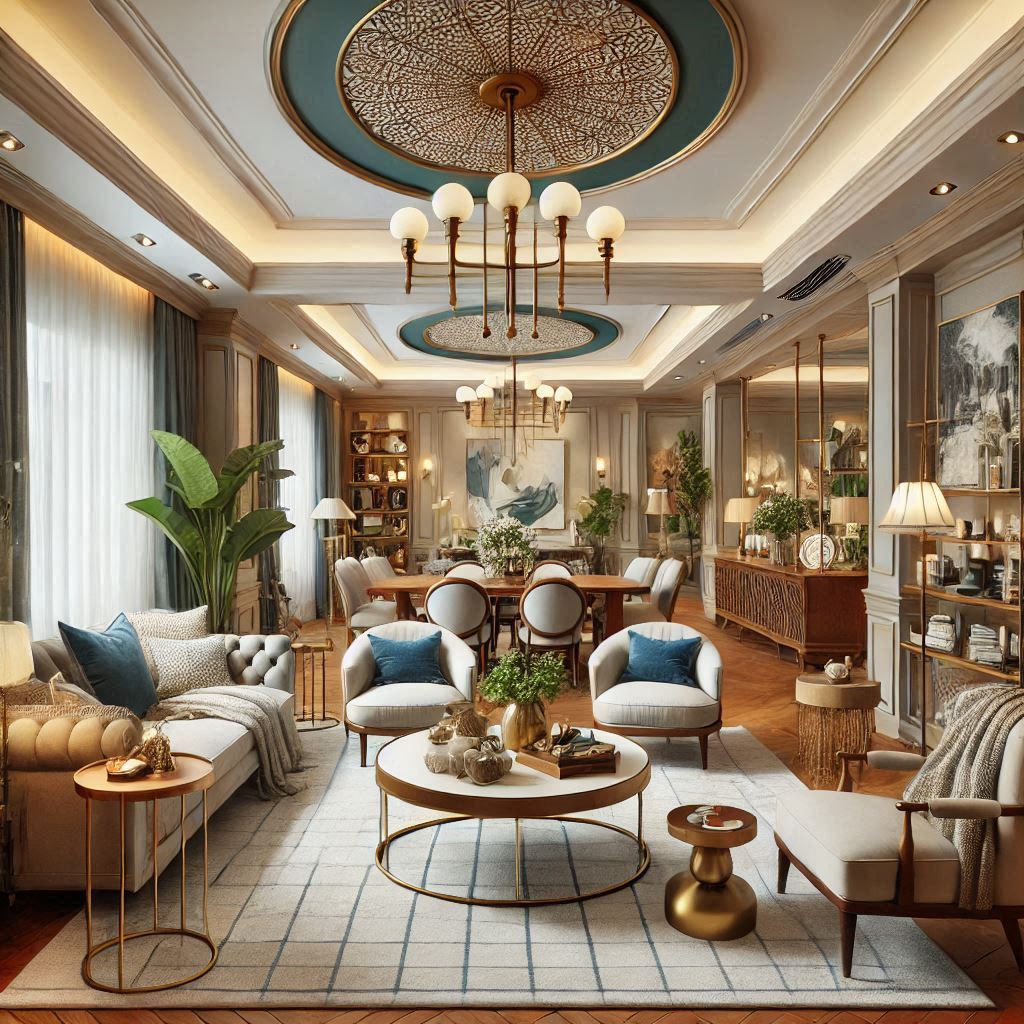
The TV Dilemma: Finding the Right Balance
The television often presents a challenge in living room design. While it's a central part of many living rooms, it can also dominate the space and detract from other focal points.
If possible, try to integrate your TV into the overall design rather than making it the sole focus. You could mount it above the fireplace, incorporate it into a built-in entertainment center, or even use a projector and screen that can be tucked away when not in use.
Pro Tip: If you're struggling to find the right balance between your TV and other focal points, consider creating separate zones within your living room. You could have a dedicated TV viewing area and a separate conversation area focused on the fireplace or view.
By paying attention to the view or focal point in your living room and arranging your furniture accordingly, you can create a space that feels balanced, harmonious, and visually appealing.
Mistake #5: Hanging Curtains Incorrectly – Don't Let Your Windows Down!
Windows are the eyes of your home, and curtains are their stylish frames. But hanging curtains incorrectly can be a major design blunder, making your living room feel shorter, cramped, and less polished.
Curtain Height: Aim High for a Grander Look
One of the most common curtain mistakes is hanging them too low. This can visually "chop off" your walls and make your ceilings appear lower than they are.
To create an illusion of height and grandeur, hang your curtains high! Ideally, you should install the curtain rod about 3 to 4 inches below the ceiling. This draws the eye upward, making the room feel more spacious and elegant.
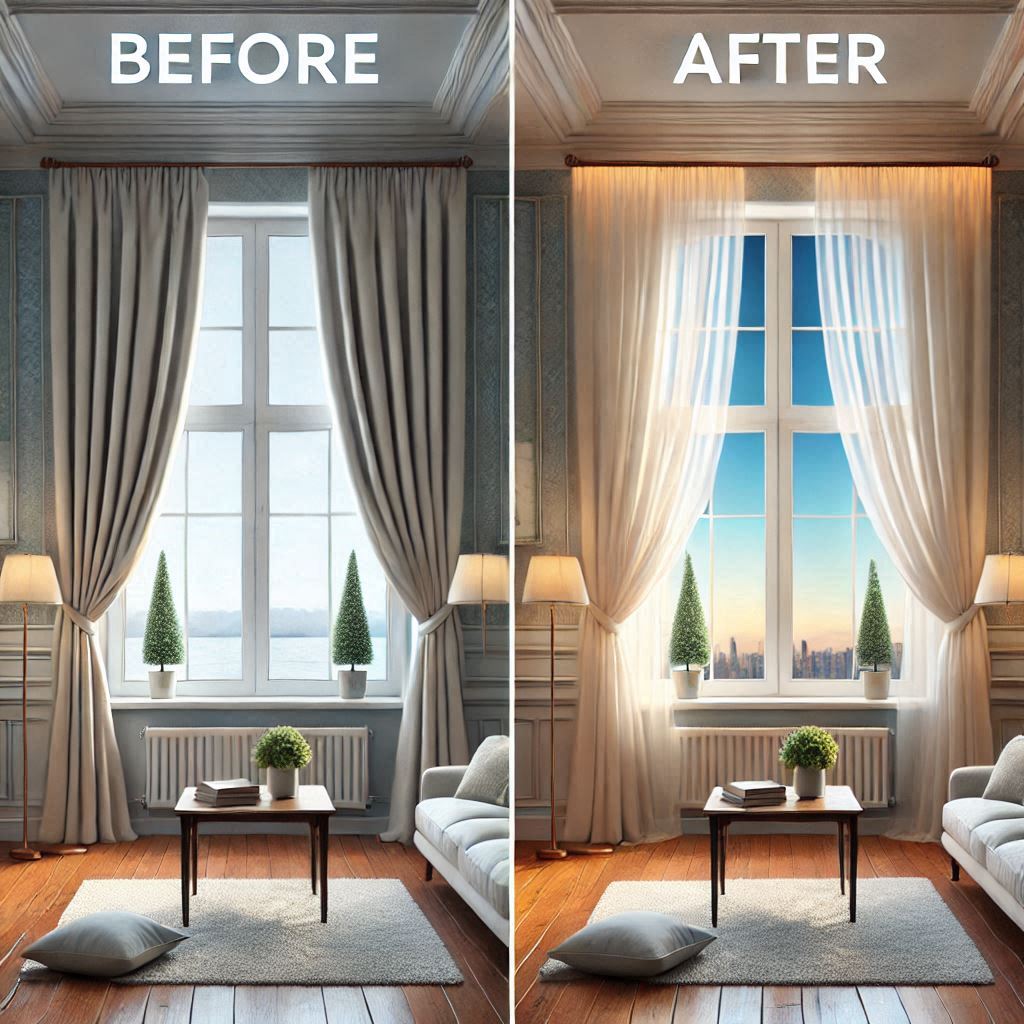
Curtain Length: A Gentle Kiss of the Floor
Another common mistake is choosing curtains that are either too short or too long. Curtains that are too short can look awkward and unfinished, while curtains that puddle on the floor can gather dust and create a tripping hazard.
The ideal curtain length is when the panels just barely touch the floor – a gentle "kiss" rather than a full-on embrace. This creates a clean, elegant look and prevents the curtains from looking messy or overwhelming the space.
Curtain Width: Let There Be Light!
Not all windows are created equal, and different window types might require different curtain hanging strategies.
-
Bay windows: For bay windows, you can either hang one long curtain rod across the entire bay or use individual rods for each window section.
-
Arched windows: If you have arched windows, you can either hang the curtains from a rod above the arch or use a curved rod that follows the shape of the arch.
-
High windows: For high windows, consider using floor-length curtains to create a dramatic and elegant effect.
Addressing Different Window Types
Pro Tip: If you're unsure about the best way to hang curtains for your specific window type, consult with a professional window treatment specialist. They can help you choose the right style, fabric, and hanging method to enhance your living room's design.
By avoiding these common curtain-hanging mistakes and following these guidelines, you can create a living room that feels more spacious, stylish, and inviting.
Mistake #6: Buying a Matchy-Matchy Furniture Set – Don't Be a One-Trick Pony!
Imagine walking into a living room where the sofa, loveseat, armchair, coffee table, and end tables all match perfectly. Same wood tone, same fabric, same style. It might seem convenient at first, like a one-stop shop for furnishing your living room. But trust me, this is a design trap you want to avoid!
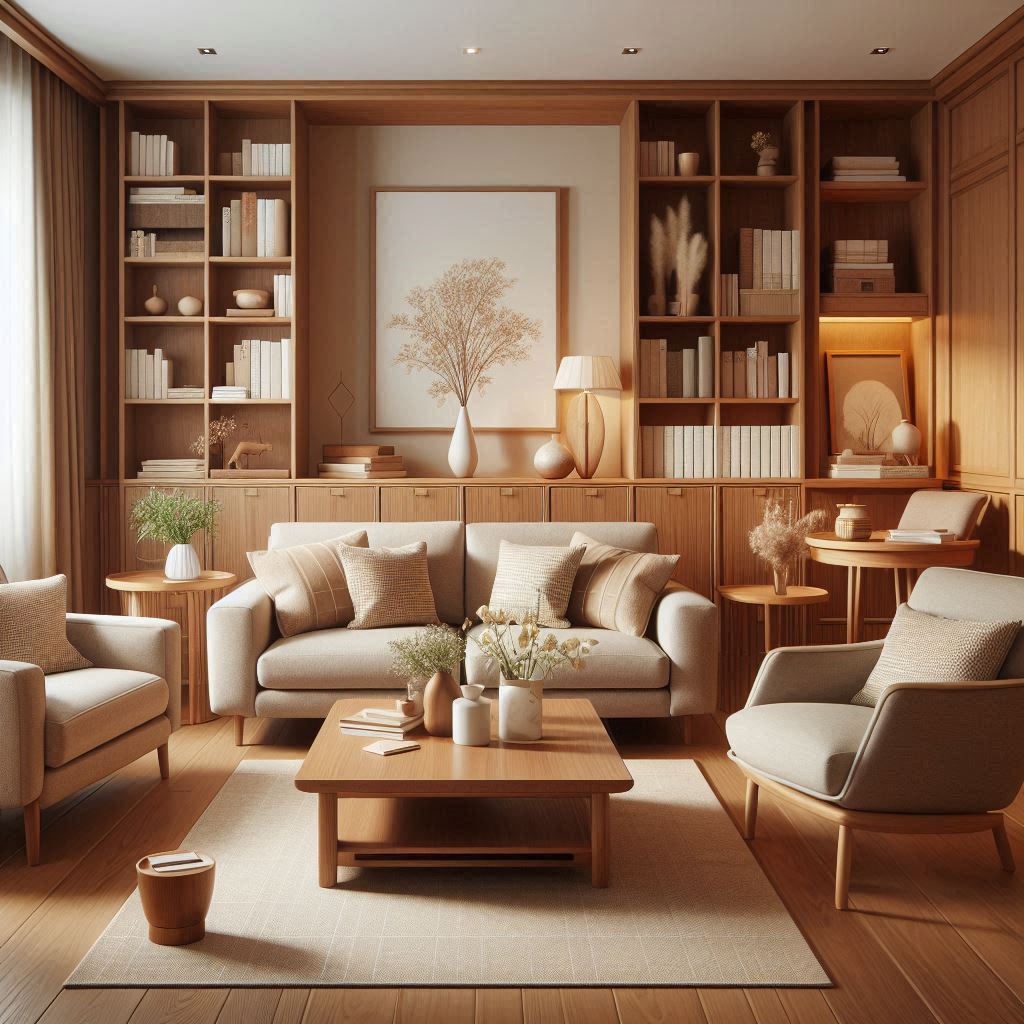
The Matchy-Matchy Mishap: Why It Falls Flat
Buying a complete matching furniture set can create a living room that feels flat, boring, and uninspired. It lacks personality, depth, and visual interest. It's like wearing a head-to-toe outfit in the same color and fabric – it might be easy, but it's not exactly fashion-forward.
A truly stylish living room is one that reflects your unique personality and taste. It's a curated collection of pieces that complement each other without being identical. It's a space that tells a story and invites you to relax and unwind.
Mixing and Matching: The Key to a Dynamic Space
Instead of buying a matching furniture set, embrace the art of mixing and matching! Choose pieces with different styles, finishes, and colors to create a more dynamic and interesting space.
-
Start with a statement piece: Begin with a piece of furniture that you absolutely love, whether it's a unique sofa, a vintage armchair, or a statement coffee table.
-
Mix up the finishes: Don't be afraid to combine different wood tones, metal accents, and upholstery fabrics. This adds depth and visual interest to your living room.
-
Play with patterns and colors: Incorporate a variety of patterns and colors in your throw pillows, rugs, and artwork to create a layered and eclectic look.
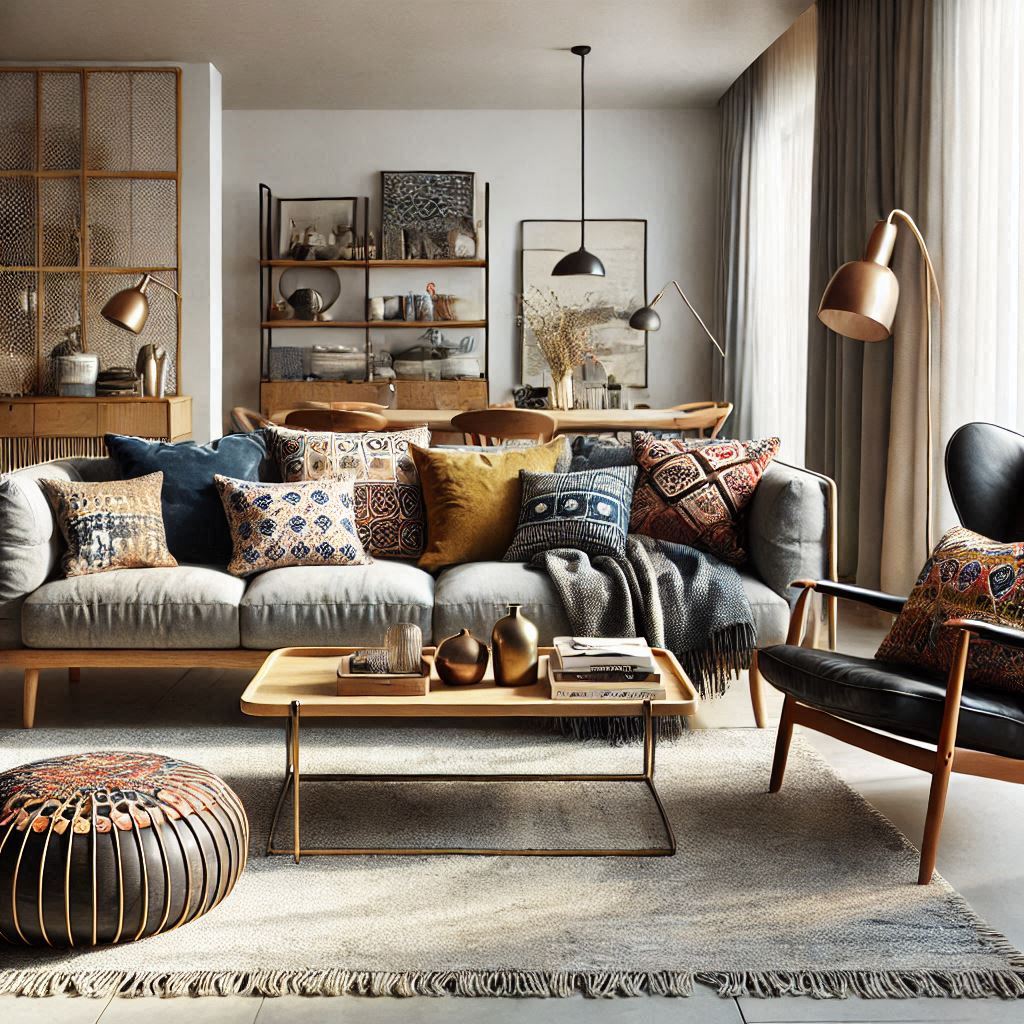
The "Same Function, Different Finish" Rule
A helpful guideline for mixing and matching furniture is the "same function, different finish" rule. This means that if you have a wooden coffee table, you might choose an end table with a metal frame or a different wood tone. This creates balance and prevents the space from feeling too matchy-matchy.
Coordinating Fabrics and Textiles
When it comes to upholstery and textiles, don't be afraid to mix and match patterns and colors. Just be sure to choose patterns and colors that complement each other and create a cohesive look.
Pro Tip: If you're unsure about how to mix and match patterns, start with a larger-scale pattern for your sofa or rug, and then incorporate smaller-scale patterns in your throw pillows and accessories.
Breaking Free from the "Set" Mentality
By breaking free from the "matching furniture set" mentality and embracing the art of mixing and matching, you can create a living room that's truly unique, stylish, and reflective of your personal taste. It's a space that will not only look great but also feel more inviting and personalized.
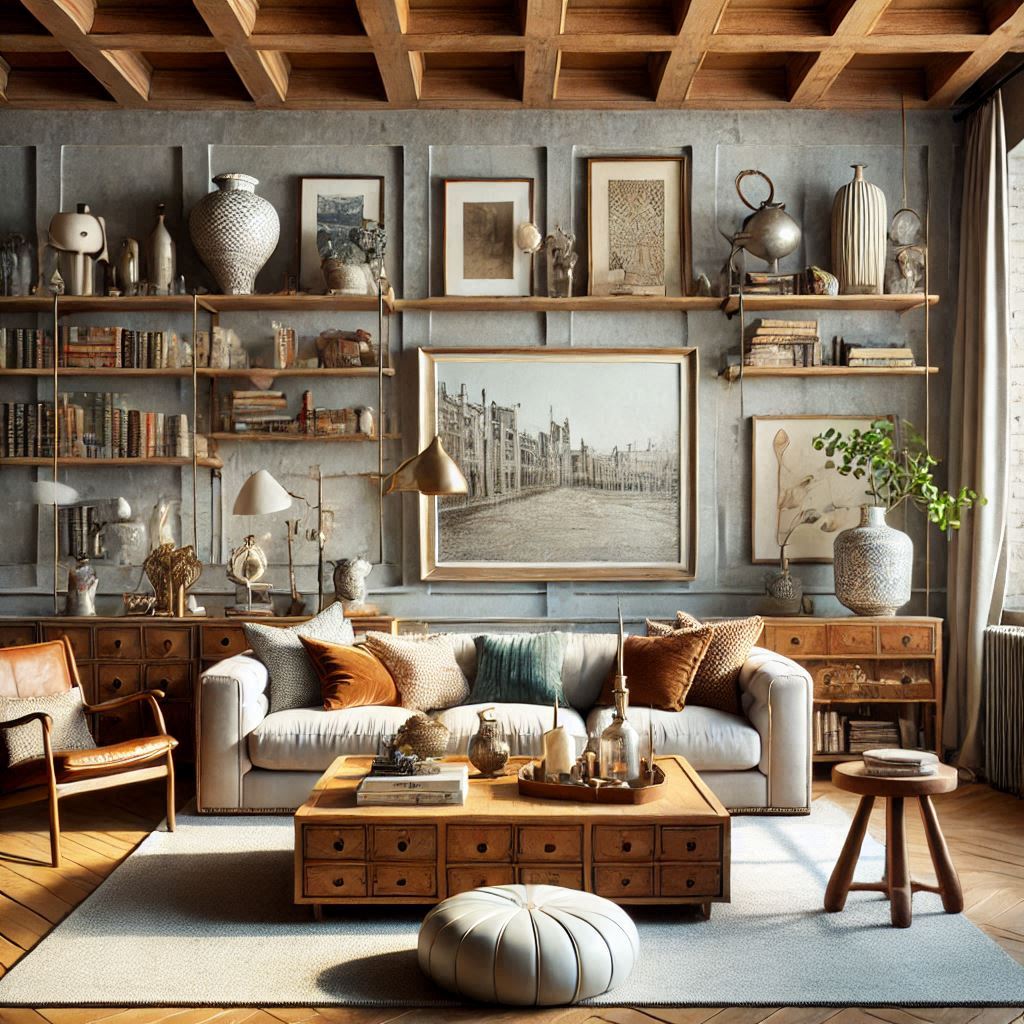
Conclusion: Design Your Dream Living Room
Congratulations, design enthusiast! You've now been schooled on some of the most common living room design mistakes, and more importantly, you've learned how to fix them. From choosing the right sofa and rug to mastering furniture placement and curtain hanging, you're well on your way to creating a living room that's both stylish and functional.
But remember, design is ultimately about expressing your unique personality and creating a space that feels like you. So, while these guidelines are helpful, don't be afraid to break the rules and experiment with different ideas.
Have fun with the process, trust your instincts, and most importantly, create a living room that you love coming home to. After all, your home should be your sanctuary, a place where you can relax, recharge, and be truly yourself.
Now, go forth and design your dream living room! And if you have any questions or design dilemmas you'd like to share, feel free to leave a comment below. Happy decorating!


